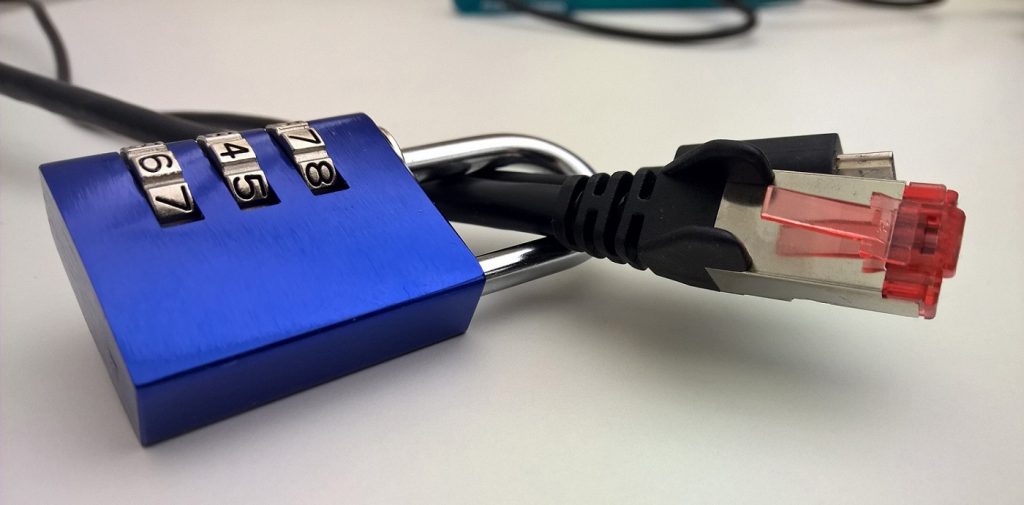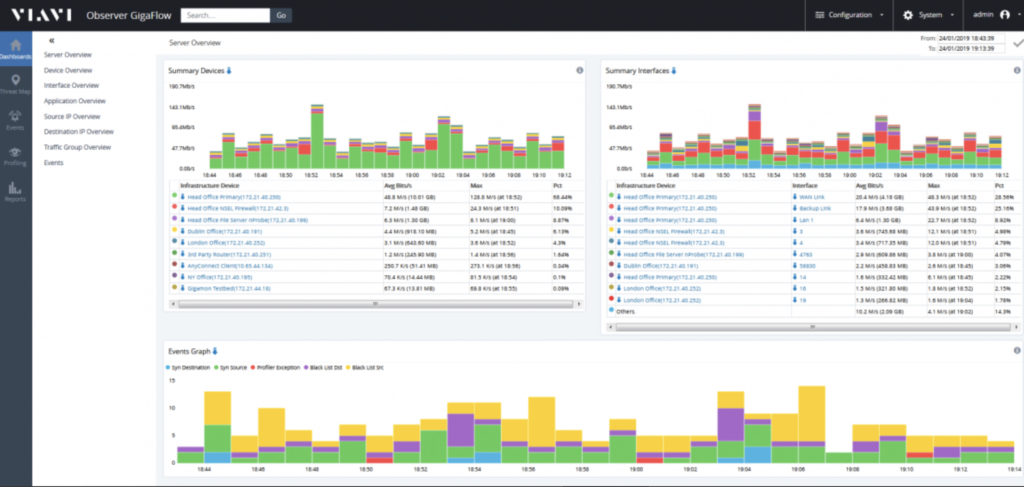Network Protocols and their Use
In June I participated in a workshop, organized by the Internet Architecture Board, on the topic of protocol design and effect, looking at the differences between initial design expectations and deployment realities. These are my impressions of the discussions that took place at this workshop.Cisco’s Davidson: ‘We’re the Most Important 5G Vendor’
 This is because Cisco can "help [network operators] monetize their 5G infrastructure," he told...
This is because Cisco can "help [network operators] monetize their 5G infrastructure," he told...
History of Networking Page
I’ve created a history of networking page which lists all the current episodes of the History of Networking podcast by technology. I have a long list of guests still to schedule, so the new page will be updated as new episodes are recorded and released.
Intel Buys Barefoot Networks, Boosts Data Center Interconnect
 The acquisition follows a spate of recent silicon vendor acquisitions and comes as Intel exited the...
The acquisition follows a spate of recent silicon vendor acquisitions and comes as Intel exited the...
China Gears Up for 5G, Issues 4 Licenses
 The government issued licenses to three mobile operators and China Broadcasting Network Corp. The...
The government issued licenses to three mobile operators and China Broadcasting Network Corp. The...
Orange Matter: Why Your Infrastructure Sucks For Automation

I’ve been blogging for Solarwinds recently, posting on Orange Matter, with a cross-post to the Thwack Geek Speak forum. Let’s face it, unless we get to build an infrastructure from the ground up, our existing mass of one-off solutions and workarounds makes automating our infrastructure an absolute nightmare.
This post appeared on Orange Matter as “Why Your Infrastctructure Sucks For Automation“, but I’m also linking to the version posted on Thwack, because that version of the post includes pretty pictures. And who doesn’t like a pretty picture?

I’d love it if you were to take a moment to visit and read, and maybe even comment!
If you liked this post, please do click through to the source at Orange Matter: Why Your Infrastructure Sucks For Automation and give me a share/like. Thank you!
Response: How Ledger Hacked an HSM – Cryptosense

HSM vendor fails basic security and integrity from a pen test.
The post Response: How Ledger Hacked an HSM – Cryptosense appeared first on EtherealMind.
Making progress in Cloudflare’s EMEA operations, and looking ahead to a bright future

Cloudflare’s operations in Europe, the Middle East and Africa (EMEA) have seen great progress over the past few years and the future looks even brighter. I joined as Head of EMEA Sales, taking responsibility for our customer-facing activity across the region, just over a year ago. I am encouraged by what we are building while being even more motivated by what lies ahead for our customers, our partners and our employees.
Cloudflare has a rich history in EMEA where London was one of the earliest bases for both the company’s engineering and also its customer-facing activities. In the subsequent years, we have expanded our customer-facing activity to include coverage into all the major EMEA countries and regions. We’ve built up a team of professional sales and business development people, capable systems engineers, dedicated customer success managers, thoughtful marketeers and a responsive customer support team who serve our existing customers and develop new ones as a committed and focused team.

We work on developing brand awareness for Cloudflare and extending our reach into the market through communications, events and most of all through ongoing close engagement with customers, prospective customers and partners. We carry the Cloudflare mission of helping build a Continue reading
A New Survey Shows Few Actively Encrypting More Because of Internet Distrust

A new survey shows that only a handful of people who said they distrust the Internet are actively choosing encryption in response.
The survey, called the CIGI-Ipsos Global Survey on Internet Security and Trust, was conducted by Ipsos on behalf of the Canadian think tank the Centre for International Governance Innovation (CIGI). The Internet Society (ISOC) and the United Nations Conference on Trade and Development (UNCTAD) are partners in the survey, which is now in its fifth year.
The survey asked more than 25,000 individuals in 25 economies their opinion on Internet security, privacy, and trust.
Trust is very personal. The word “trust” may mean different things to different people. What we consider to be trust is constantly evolving and is shaped by many factors including our culture, our education, and our experience.
The survey asked users how much they agree or disagree with the statement “Overall, I trust the Internet”. We did not ask users how much they trust the Internet to perform in specific ways or to provide a specific user experience. However, the question provides a rough indicator of positive or negative attitudes towards the Internet.
74% of respondents in 2019 agreed with the statement Continue reading
Use Per-Link Prefixes in Network Data Models
We got pretty far in our data deduplication in network data model journey, from initial attempts to network modeled as a graph… but we still haven’t got rid of all the duplicate information.
For example, if we have multiple devices connected to the same subnet, why should we have to specify IP address and subnet mask for every device (literally begging the operators to make input errors). Wouldn’t it be better (assuming we don’t care about exact IP addresses on core links) to assign IP addresses automatically?
Cisco CEO Takes High Road on 5G, China
 Besides macro radio access network equipment, "we have virtually everything else you need to build...
Besides macro radio access network equipment, "we have virtually everything else you need to build...
Cisco Clarifies Vision, Need for Modern Networking at Cisco Live
 Cisco kicked off Cisco Live with a series of updates to its intent-based networking architecture to...
Cisco kicked off Cisco Live with a series of updates to its intent-based networking architecture to...
Americans Deserve Better User Privacy

On May 15th, the White House tweeted it had created a new online surveying tool for Americans to report instances of social media censorship due to political bias. Setting aside the politics of this move, there are serious privacy and security concerns that come with hosting such a survey on its website.
When users visit the reporting site, they’re required to give personal information including their name, citizenship status, zip code, phone number, and email address, all before any questions are actually asked about the alleged social media bias. They are then prompted to include links to their social media platforms, usernames, and other digitally-intrusive information.
Sound fishy? It should.
That is a significant amount of personal, highly-identifiable information to give up as a part of a selective survey. The irrelevance of most of this information to the survey’s purpose begs the question: why does the government need it and what will they use it for?
Neither question is answered anywhere in the survey or its related materials. That alone poses a serious privacy concern. If users don’t know how their data will be used, how can they trust that their information is secure and being used only for the Continue reading
Viavi Enterprise Provides Unexpected Network Insights

Many of us will have experienced the challenges of taking a performance alert (or user complaint) and drilling down to root cause. Performance issues can be intermittent, and it can be difficult to get visibility of what caused a problem at a particular time. Viavi Enterprise thinks it has the answer, combining analysis of packet feeds (e.g. from taps and mirror ports) and IPFix, xFlow and cloud service flow logs to monitor application performance as it would be experienced by a user. Sounds good? It looked pretty good, too.
Johnny Five Need Input!
Nothing can happen without data, and that comes from a number of potential sources.
Observer Gigastor

The Observer Gigastor product is available as a virtualized solution (to capture east-west traffic in virtualized environments), a portable appliance for tactical deployment, and two hardware appliance models (in a charming shade of purple) which can provide from 96TB to 1.2PB of storage. The idea of Gigastor is to capture packets at line rate and retain the raw packet data in case it’s needed later. The packets are analyzed, and that metadata is fed to the reporting and visualization system, Observer Apex.
Observer GigaFlow

It’s not always possible Continue reading
The CCIE Times Are A Changing

Today is the day that the CCIE changes. A little, at least. The news hit just a little while ago that there are some changes to the way the CCIE certification and recertification process happens. Some of these are positive. Some of these are going to cause some insightful discussion. Let’s take a quick look at what’s changing and how it affects you. Note that these changes are not taking effect until February 24, 2020, which is in about 8 months.
Starting Your Engines
The first big change comes from the test that you take to get yourself ready for the lab. Historically, this has been a CCIE written exam. It’s a test of knowledge designed to make sure you’re ready to take the big lab. It’s also the test that has been used to recertify your CCIE status.
With the new change on Feb. 24th, the old CCIE written will go away. The test that is going to be used to qualify candidates to take the CCIE lab exam is the Core Technology exam from the CCNP track. The Core Technology exam in each CCNP track serves a dual purpose in the new Cisco certification program. If you’re Continue reading